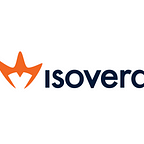Lost in Translation?
It’s typical to assume that your website’s audience speaks English. After all, English is the third most common language in the world (behind Mandarin and Spanish), and is often considered the universal language of business and of the web. But did you know that seventy-five percent of consumers prefer to buy products in their native language?
Your global company needs to reach clients all over the world, but if your content is only in English you will miss out on connecting with non-native speakers. Drupal 8’s built in language handling capabilities can help you create content in multiple languages across your site, but getting good results can be a challenging and costly endeavor.
Issues to consider
Before you get started, there are three key points to consider.
Translation Strategy:
What languages do you need to include? How will language options be displayed/selected? Will you translate everything, or only core messages?
Website Platform:
Does your current content management system easily manage multilingual content? The CMS itself will not perform the actual content translation. Rather, it facilitates multilingual content by providing tools for both end users (selecting the the language they wish to read, rendering content in the appropriate language) and content managers (managing translation workflows and configurations).
Translation Workflow:
Will you create the translations yourself, or hire a third party? How will content be prepared for translation, shared with translators, entered into the CMS, reviewed, and approved?
What’s next?
Drupal 8 was built with internationalization in mind. Isovera’s multilingual strategy experts, our deep Drupal 8 technical background, and our extensive experience integrating third party APIs, can help you internationalize your website cost effectively and quickly.
This article was originally published by Kellie Walton on our Isovera blog.
